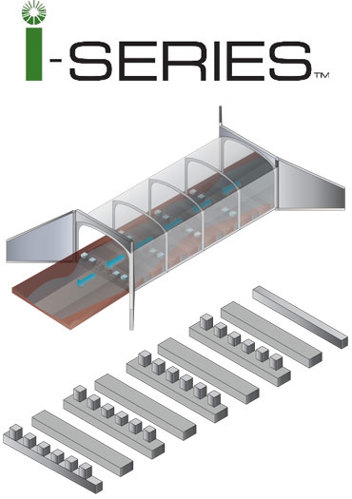
- Pipe
- Bridges & Structures
- Walls
- Stormwater Management
- Erosion Control
- Start a Project
- Knowledge Center
- Technical Documents

Our local contacts are experts who are ready to help
There are over 10,000 CON/SPAN installations since 1983. CON/SPAN Bridge Systems have been used by more state DOTs than any other system.

With a history of innovation and experience, Contech has taken precast culverts to the next level with the CON/SPAN® i-Series. Integration of the i-Series invert technology promotes sedimentation of natural streambed material. This creates a natural bottom, open to the hyporheic zone below. The engineered bottom enhances the stream biology and ecology as well as provides areas of low velocity to allow for fish passage through the culvert. Spans range from 12’ to 24’.
The Washington State Department of Fish and Wildlife (WDFW) published a stream-crossing guideline which enumerates nine expected outcomes of a successful stream-simulation culvert design. Hyporheic connectivity differentiates the ecological bottom culvert from traditional culvert options. Of these ten outcomes, nine are expected to be fulfilled by the ecological invert technology, as supported by the results of the testing program (available upon request). The tenth outcome, bed gradation continuity, can be achieved by manual filling of the culvert at installation with natural bed sediments.
| Successful Culvert Design Outcomes |
i-Series™ Culvert | Traditional Culvert w/ Invert (may include buried invert) |
| Sizing | • | • |
| Flood Conveyance | • | |
| Fish Passage | • | |
| Profile Continuity | • | |
| Hydraulic Diverity | • | |
| Sediment Transport Continuity |
• | |
| Low Flow Continuity | • | |
| Margin Habitat | • | |
| Debris Transport | • | |
| Connectivity to Subgrade (hyporheic zone) |
• | • |
| Bed Gradation Continuity | • |
CONTECH DESIGN CENTER
Design HelpTechnical Documents
Case Studies
Explore the case studies libraryPOPULAR DOWNLOADS
Our team is ready to provide you with expert advice and assistance on local regulatory requirements, resulting in faster approvals.
Our engineers can review your requirements, weigh all options, and recommend the optimal solution to integrate with your site designs.
Our engineers can assist by providing product specific engineering calculations such as hydraulics, buoyancy, foundation reactions, and unit sizing.
We can quickly provide engineer’s cost
estimates to assist with your solution
selection process.
Our engineers can provide site-specific drawings for proposals, project meetings, and submittals, helping you be more efficient with your time.
Contractors know time is money, so we provide preconstruction meetings, delivery coordination, and on-site installation support to ensure a timely, smooth installation.